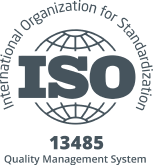Radially Orientated Sintered NdFeB Rings
An Overview of Advanced Magnetic Materials
Introduction
Radially orientated sintered NdFeB rings are advanced magnetic materials renowned for their exceptional performance and versatility. NdFeB stands for Neodymium-Iron-Boron, a combination that results in the strongest permanent magnets available today. These magnets are widely used in various applications, from industrial machinery to consumer electronics, due to their high magnetic strength and stability.
Composition and Manufacturing
The NdFeB magnet consists primarily of neodymium, iron, and boron. The manufacturing process involves sintering, wherein powdered NdFeB material is heated to a temperature below its melting point to create a solid, dense magnet. The radial orientation refers to the magnet’s internal structure, where the magnetic grains are aligned in a radial pattern. This unique configuration enhances the magnetic properties and efficiency of the rings.
Sintering Process
The sintering process begins with the preparation of the NdFeB powder. This powder is subjected to a magnetic field during pressing to ensure the grains are aligned radially. The compacted powder is then sintered at high temperatures in a controlled atmosphere, typically in a vacuum or inert gas environment, to prevent oxidation. After sintering, the magnets undergo various finishing processes, such as machining and coating, to achieve the desired dimensions and surface protection.
Magnetic Properties
Radially orientated sintered NdFeB rings exhibit superior magnetic characteristics, including:
- High Remanence: The ability to maintain a strong magnetic field.
- High Coercivity: Resistance to demagnetization.
- High Energy Product: The overall strength of the magnet.
These properties make them ideal for applications requiring reliable and powerful magnets.
Applications
Radially orientated sintered NdFeB rings are employed in various industries due to their robust performance.
Automotive Industry
In the automotive sector, these magnets are used in electric motors, sensors, and actuators, contributing to the efficiency and reliability of modern vehicles. They play a crucial role in hybrid and electric vehicles, enhancing the performance of motors and reducing energy consumption.
Consumer Electronics
These magnets are integral to consumer electronics such as smartphones, laptops, and speakers. Their compact size and high magnetic strength enable the development of smaller and more efficient devices without compromising performance.
Medical Devices
In the medical field, radially orientated sintered NdFeB rings are used in MRI machines, surgical instruments, and other critical equipment. Their precise magnetic properties ensure accurate imaging and functionality, improving patient care and diagnostic capabilities.
Advantages and Limitations
Advantages
Radially orientated sintered NdFeB rings offer several benefits:
- Superior Magnetic Strength: They provide stronger magnetic fields than other permanent magnets.
- Temperature Stability: They maintain performance across a wide temperature range.
- Compact Size: High energy density allows for smaller magnet sizes in applications.
Limitations
Despite their advantages, NdFeB magnets have some limitations:
- Cost: The raw materials, particularly neodymium, are expensive.
- Corrosion: NdFeB magnets are prone to oxidation and require protective coatings.
- Temperature Sensitivity: Although stable, extreme temperatures can affect their performance.
Future Prospects
The ongoing research and development in magnetic materials continue to enhance the properties and applications of radially orientated sintered NdFeB rings. Innovations in manufacturing techniques, such as additive manufacturing and improved coatings, aim to overcome current limitations and expand their usability. The demand for high-performance magnets in emerging technologies, such as renewable energy systems and advanced robotics, ensures a promising future for NdFeB magnets.
Conclusion
Radially orientated sintered NdFeB rings represent a pinnacle in magnetic material technology, offering unmatched performance and versatility. Their application in various industries underscores their importance in modern technological advancements. As research progresses, these magnets will continue to play a pivotal role in shaping the future of high-performance applications across multiple sectors.








